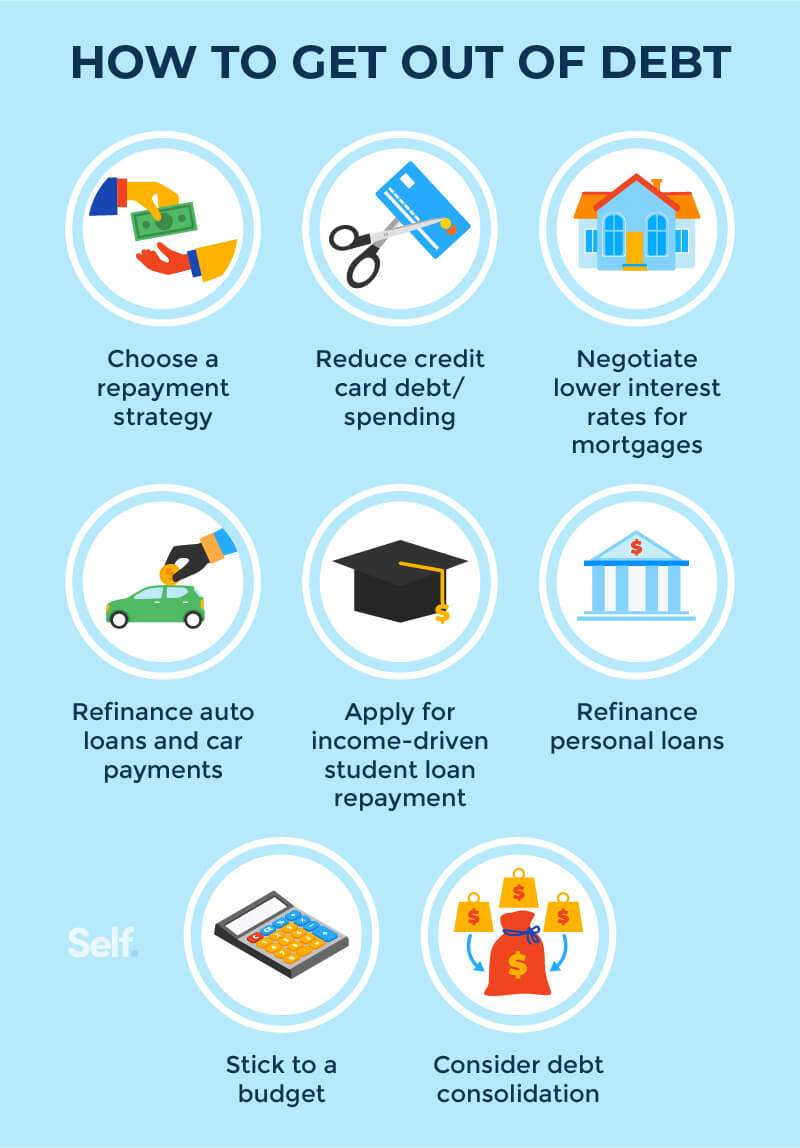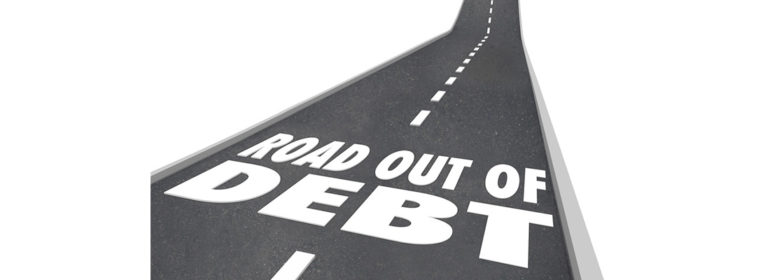To get out of debt, consider applying for personal loans as an effective solution. Personal loans can provide the necessary funds to pay off high-interest debts and consolidate them into one manageable loan.
Debt can be overwhelming and burdensome, affecting not only your financial well-being but also your peace of mind. If you find yourself struggling to make minimum payments or drowning in high-interest debts, taking out a loan may be a viable option to regain control of your finances.
By obtaining a personal loan, you can consolidate existing debts, lower your interest rates, and ultimately save money in the long run. This article will explore the benefits and considerations of using loans to get out of debt, guiding you towards a path of financial freedom and stability. So, buckle up, as we delve into the world of personal loans as a means to eliminate debt and achieve your financial goals.
Table of Contents
Assessing Your Financial Situation
Assessing your financial situation can help you determine the best loans to get out of debt, ensuring a streamlined approach to your financial recovery. Analyzing your income, expenses, and debt obligations will guide you towards the most effective solutions for debt consolidation or repayment.
Assessing your financial situation is the first crucial step towards getting out of debt. Understanding the full extent of your financial obligations and considering your income and expenses will help you develop a comprehensive plan to tackle your debts. By taking a clear and honest look at your financial situation, you can gain valuable insights into your debt and make informed decisions on the best way forward. Let’s explore two key aspects of assessing your financial situation: calculating your total debt and determining your income and expenses.Calculating Your Total Debt
To begin, it’s important to calculate your total debt accurately. Gather all the necessary information, such as outstanding loans, credit card balances, and any other debts you owe. Make a list of each debt, the outstanding balance, and the interest rates attached to them. This will give you a clear picture of your current debt load. Once you have your list, consider organizing the information in a table format for better clarity:| Debt Type | Outstanding Balance | Interest Rate |
|---|---|---|
| Credit Cards | $5,000 | 18% |
| Student Loans | $20,000 | 5% |
| Personal Loan | $8,000 | 12% |
Determining Your Income And Expenses
Equally important is determining your income and expenses. Start by examining your monthly income from all sources, such as your salary, freelance work, or rental income. Include any additional sources of income to get an accurate representation of your financial situation. Next, assess your monthly expenses. Categorize them into essential and non-essential expenses. Essential expenses typically include bills, groceries, transportation costs, and loan repayments. Non-essential expenses might include dining out, entertainment, or unnecessary subscription services. Be thorough in identifying and documenting all your expenses. Consider creating a simple breakdown using bullet points or an ordered list:- Income:
- Salary: $3,000
- Freelance work: $500
- Essential Expenses:
- Rent/Mortgage: $1,200
- Utilities: $100
- Transportation: $300
- Loan Repayments: $400
- Non-Essential Expenses:
- Dining Out: $200
- Entertainment: $100
- Subscriptions: $50

Credit: www.self.inc
Types Of Loans Available
When it comes to getting out of debt, choosing the right loan option can make a significant difference in your financial journey. Different types of loans are available for individuals looking to consolidate and manage their debt effectively. Let’s explore two popular loan options – Personal loans and Balance transfer credit cards – in detail:
Personal Loans
A personal loan is a flexible financial tool that can help you consolidate and pay off your debts. It is an unsecured loan, meaning you don’t need to provide any collateral. Personal loans are available from banks, credit unions, and online lenders.
Here are the key features of a personal loan:
- Flexible loan amounts ranging from a few hundred dollars to tens of thousands of dollars.
- Fixed interest rates and monthly payments, making it easier to budget.
- Repayment terms typically range from one to five years.
Personal loans offer various benefits, such as:
- Consolidating multiple debts into a single monthly payment, making it easier to manage.
- Lower interest rates compared to credit cards, especially if you have a good credit score.
- Fixed repayment schedule, ensuring you stay on track with your debt payments.
Balance Transfer Credit Cards
Another option to consider when looking for loans to get out of debt is a balance transfer credit card. This type of credit card allows you to transfer your existing credit card balances to a new card with a lower interest rate, often an introductory 0% APR for a specific period.
Here’s what you need to know about balance transfer credit cards:
- Introductory 0% APR offers can range from 6 to 18 months, giving you time to pay off your debt without accumulating additional interest.
- Transferring your balances to a single card simplifies your repayment process.
- Ensure you understand the terms and fees associated with balance transfers, including any balance transfer fees or the APR that applies after the introductory period.
Balance transfer credit cards can be beneficial in the following ways:
- Save money on interest payments, which can help you pay off your debt more quickly.
- Consolidate your credit card debt into one manageable payment.
- Take advantage of introductory offers to pay down your debt faster.
Before choosing a balance transfer credit card or a personal loan, carefully evaluate your financial situation, consider the terms and conditions, and compare interest rates and fees. This will help you make an informed decision and choose the loan option that best fits your needs.
Evaluating Loan Options
Facing a mountain of debt can be overwhelming, but taking out a loan can help you regain control of your finances. However, it’s crucial to evaluate your loan options carefully to make an informed decision. By comparing interest rates and examining repayment terms, you can choose the loan that suits your needs the best.
Comparing Interest Rates
One of the key factors to consider when evaluating loan options is the interest rate. The interest rate determines the amount you’ll pay in addition to the principal loan amount. To ensure you’re getting the best deal, comparing interest rates from multiple lenders is essential. Look for lenders that offer competitive rates, as even a small difference in interest rates can significantly impact your overall repayment amount. Consider creating a table to compare interest rates offered by different lenders, enabling you to find the most favorable option.
Examining Repayment Terms
Beyond interest rates, it’s crucial to examine the repayment terms offered by each lender. Repayment terms include factors such as the duration of the loan and the monthly payment amount. Longer repayment terms may offer lower monthly payments but could result in paying more interest over time. On the other hand, shorter repayment terms may come with higher monthly payments but can help you pay off your debt faster. By carefully examining these terms, you can find a balance that suits your financial situation. Consider creating a list with specific details of each lender’s repayment terms to help you make an informed choice.
Remember, evaluating loan options requires a thorough assessment of interest rates and repayment terms. By taking the time to compare and analyze these details, you can find a loan that aligns with your financial goals, ultimately helping you get out of debt more efficiently.
_1.jpg?ext=.jpg)
Credit: www.coastal24.com
Applying For A Loan
Looking to get out of debt? Applying for a loan could be the solution you need. Find the right loan option to help you consolidate your debts and pave the way towards financial freedom.
Gathering Necessary Documents
Before applying for a loan to get out of debt, it’s important to gather all the necessary documents. Take a look at the table below for a quick overview of the documents you’ll need:
| Document | Description | Importance |
|---|---|---|
| Proof of income | Recent pay stubs or tax returns | Shows your ability to repay the loan |
| Identification | Valid government-issued ID | Confirms your identity |
| Employment details | Contact information and duration of employment | Verifies stability and income source |
| Bank statements | Recent statements from your bank account | Provides insight into your financial situation |
| Credit history | Credit reports from all major bureaus | Informs lenders about your creditworthiness |
By having these documents ready, you’ll streamline the application process and increase your chances of approval. Remember, bold and organized documentation speaks volumes about your commitment to repayment.
Completing The Application Process
Once you have gathered the necessary documents, it’s time to complete the loan application. Follow these steps to ensure a smooth and efficient process:
- Find a trusted lender: Research reputable lenders with favorable terms and rates.
- Review eligibility criteria: Check the lender’s requirements to make sure you qualify for the loan.
- Fill out the application: Provide accurate and complete information to avoid delays or rejections.
- Submit required documents: Attach the gathered documents to support your application.
- Include additional information: If needed, provide any supplementary details requested by the lender.
- Double-check for accuracy: Ensure all the information entered is correct and error-free.
- Submit your application: Send the application and documents electronically or through the lender’s preferred method.
Remember, honesty and accuracy throughout the application process are key to building trust with the lender.
:max_bytes(150000):strip_icc()/debt-forgiveness-how-get-out-paying-your-student-loans.asp-Final-ef57becb1d764492828f548041b9ab58.jpg)
Credit: www.investopedia.com
Frequently Asked Questions For Loans To Get Out Of Debt
Can I Get A Loan To Get Out Of Debt?
Yes, you can get a loan to help you pay off your debts. It can consolidate your debt into one monthly payment, making it easier to manage. However, consider your financial situation and make sure you can afford the loan before applying.
Can I Get A Loan To Clear My Debts?
Yes, you can get a loan to clear your debts. Many lenders offer debt consolidation loans to help you pay off multiple debts with a single loan. Make sure to compare interest rates and terms before applying.
What Type Of Loan Is Best For Paying Off Debt?
The best loan for paying off debt depends on your situation, but options like personal loans or debt consolidation loans can be ideal. These loans offer lower interest rates, flexible repayment terms, and can help you consolidate your debts into one manageable payment.
Can I Get A Government Loan To Pay Off Debt?
Yes, you can get a government loan to pay off debt. These loans are specifically designed to help individuals manage and eliminate their debt burden. Check with your local government or financial institutions for more information on the eligibility criteria and application process.
Conclusion
Taking out a loan can be a viable option for getting out of debt. By carefully comparing and selecting the right loan, you can consolidate your debts, reduce interest rates, and simplify your repayment process. However, it is essential to approach loans responsibly and ensure that you have a solid plan in place to repay them.
Remember to consider your financial situation and consult with a professional before making any final decisions. Take control of your debt and work towards a debt-free future.
